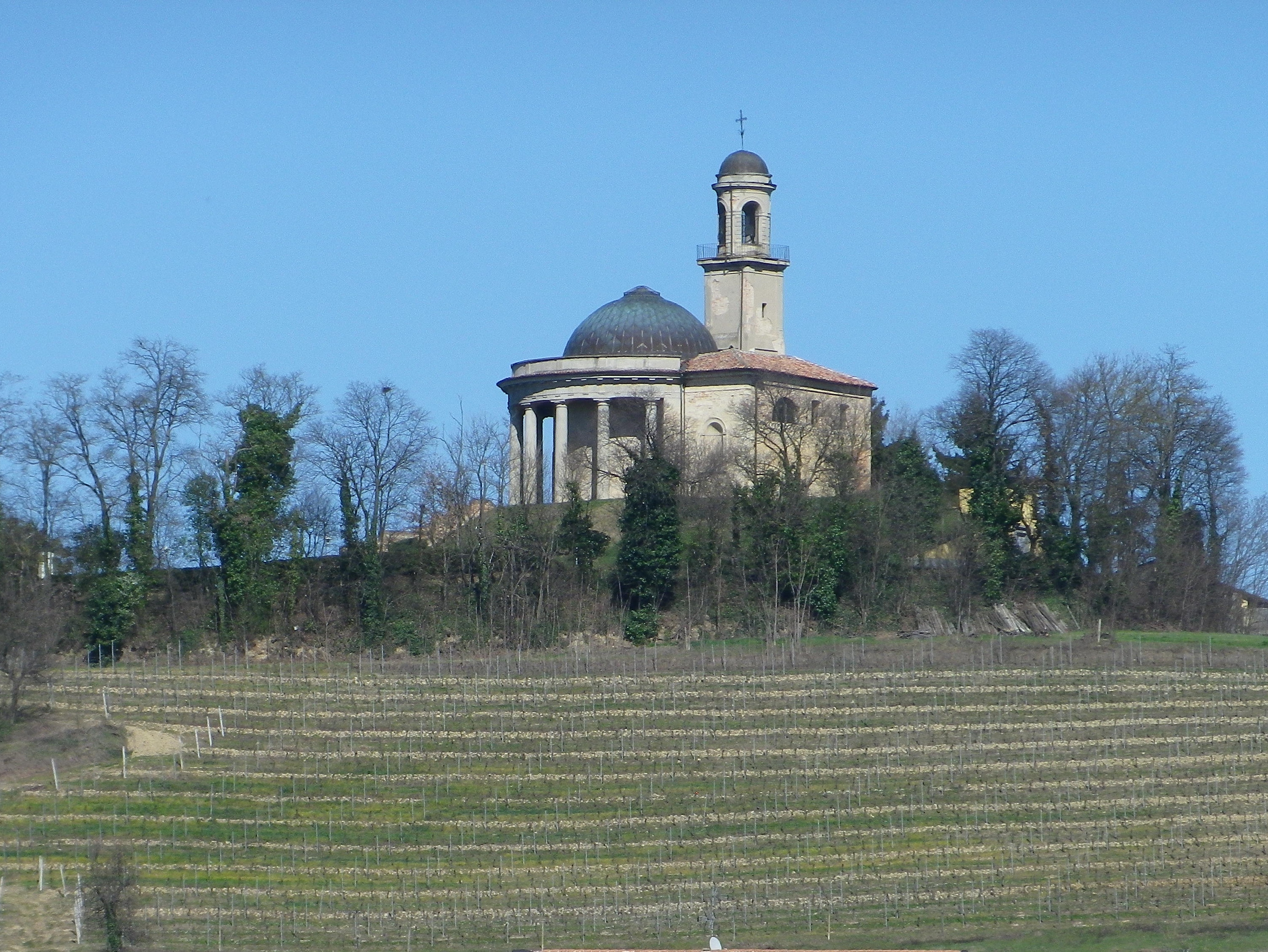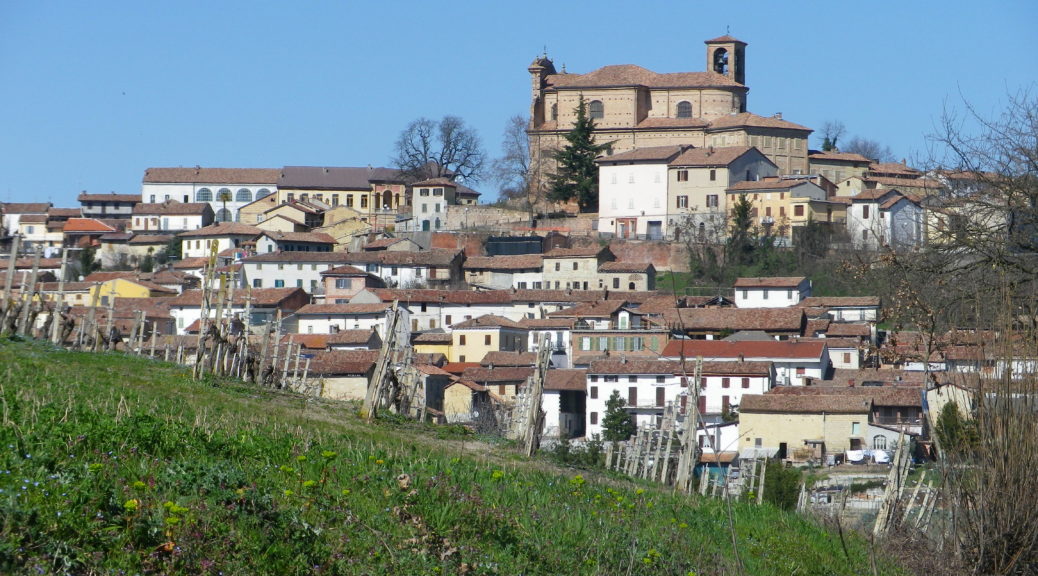There is nothing like Italian sunshine to chase away the winter blues. And in vineyards in March, the sun melts the snow faster, and the vineyards begin to show hints of life earlier, making a March hike through the Piedmont countryside a true delight.
Add to this the opportunity to taste a light, sweet wine, with sweet summer berry flavors, and dreams of summer flood the senses. In this case, the wine was Malvasia, and the countryside was around the Piedmont village of Casorzo, homeland of the DOC Malvasia di Casorzo.
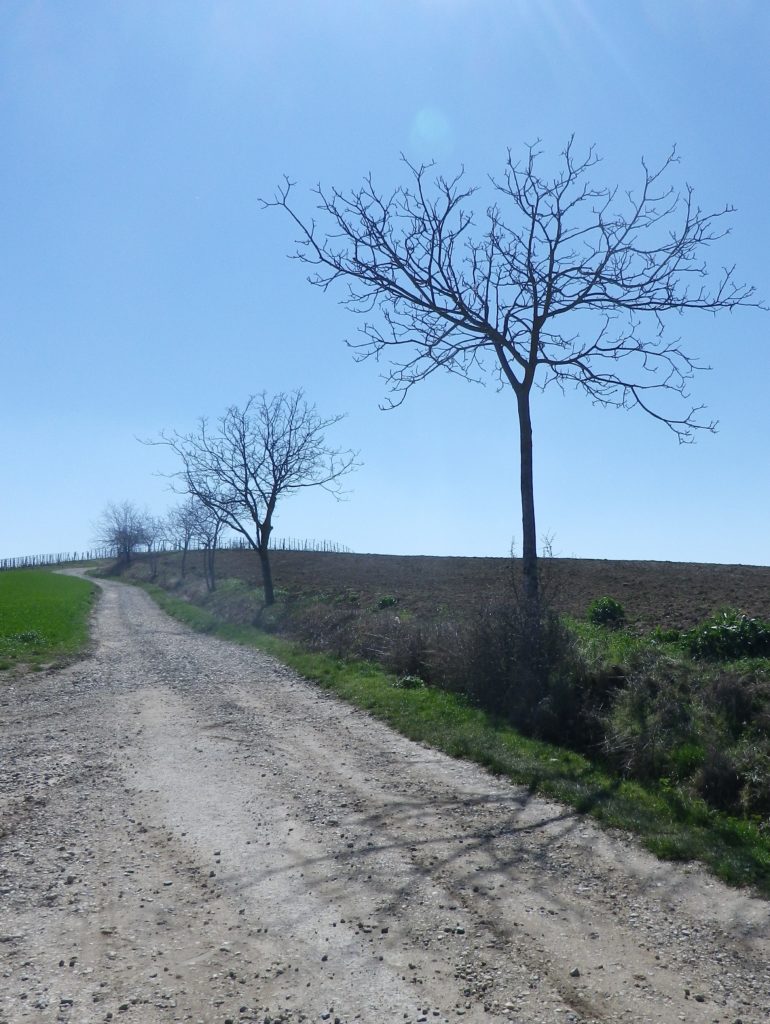
The village of this somewhat famous wine is rather small, both in size and population (under 1000 people). Agriculture is THE business here. Much of this area is under vine, although there were also other crops. The local cooperative, officially named the Cantina Sociale di Casorzo, is apparently the largest business entity around. It helped to sponsor this hiking trail named for, and devoted, to Casorzo’s famed, local varietal: Malvasia di Casorzo. The coop is conveniently located at the start and finish of this circuit, which loops around much of the village’s outskirts. Just a bit beyond the cantina, the vines begin a long, slow ascent up a hill. As in much of the Piedmont, this is a hilly area, so the trail ascends and descends with regularity along its 10 kilometer course. From bare, sun-kissed hilltops, to vales defined by small creeks, the trail meandered between fields and vineyards through still countryside.
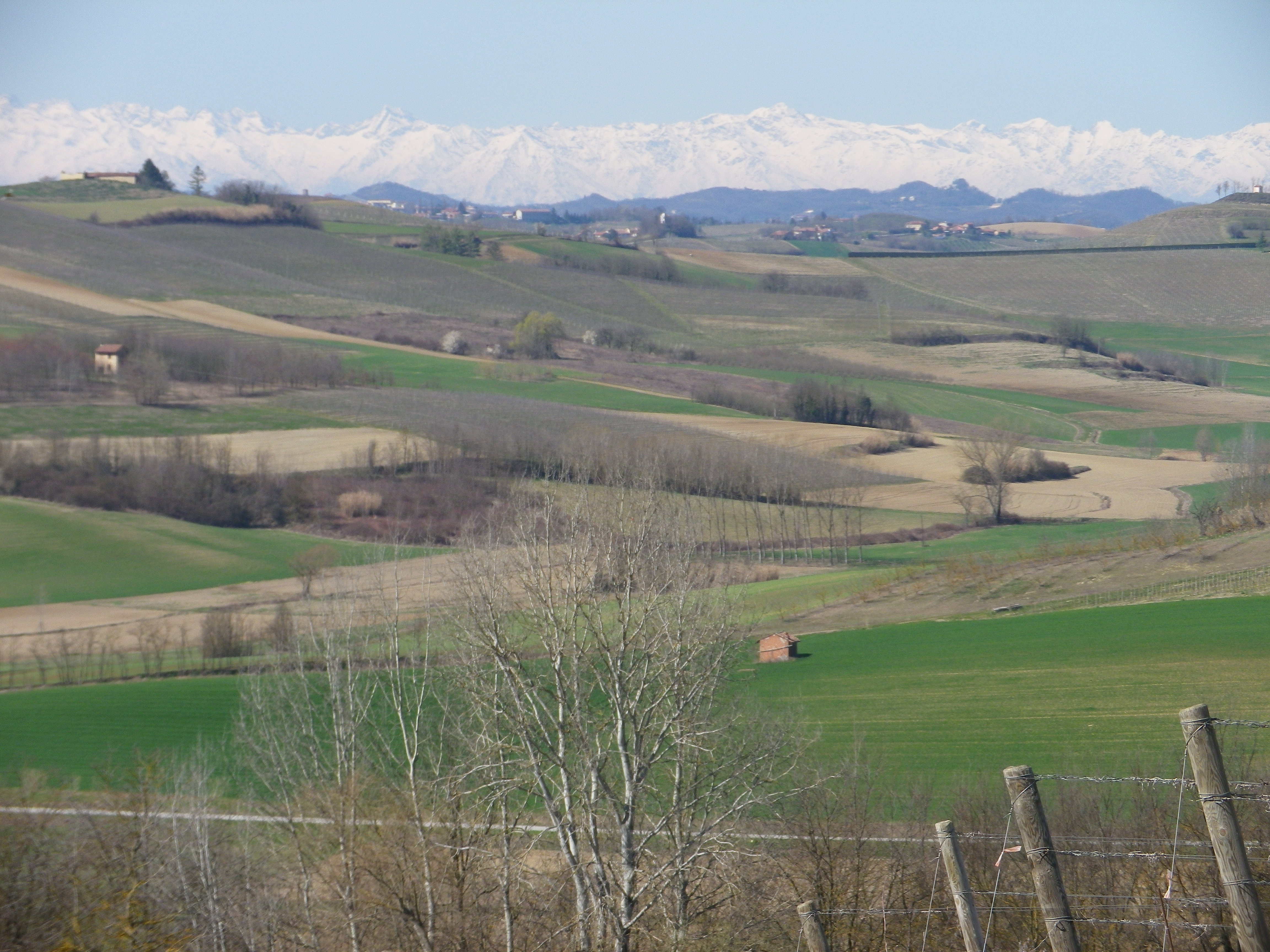
The hilltops offered views of the near and far distances. Ranges of snow-covered Alps dominated the far distances, dramatically delimiting a brilliant blue horizon. Closer by, dozens of villages were visible. Many of them self-contained bastions of brick, punctuating near-by hilltops. I would later visit two of the more typical ones: Vignale Monferrato, and Treville.
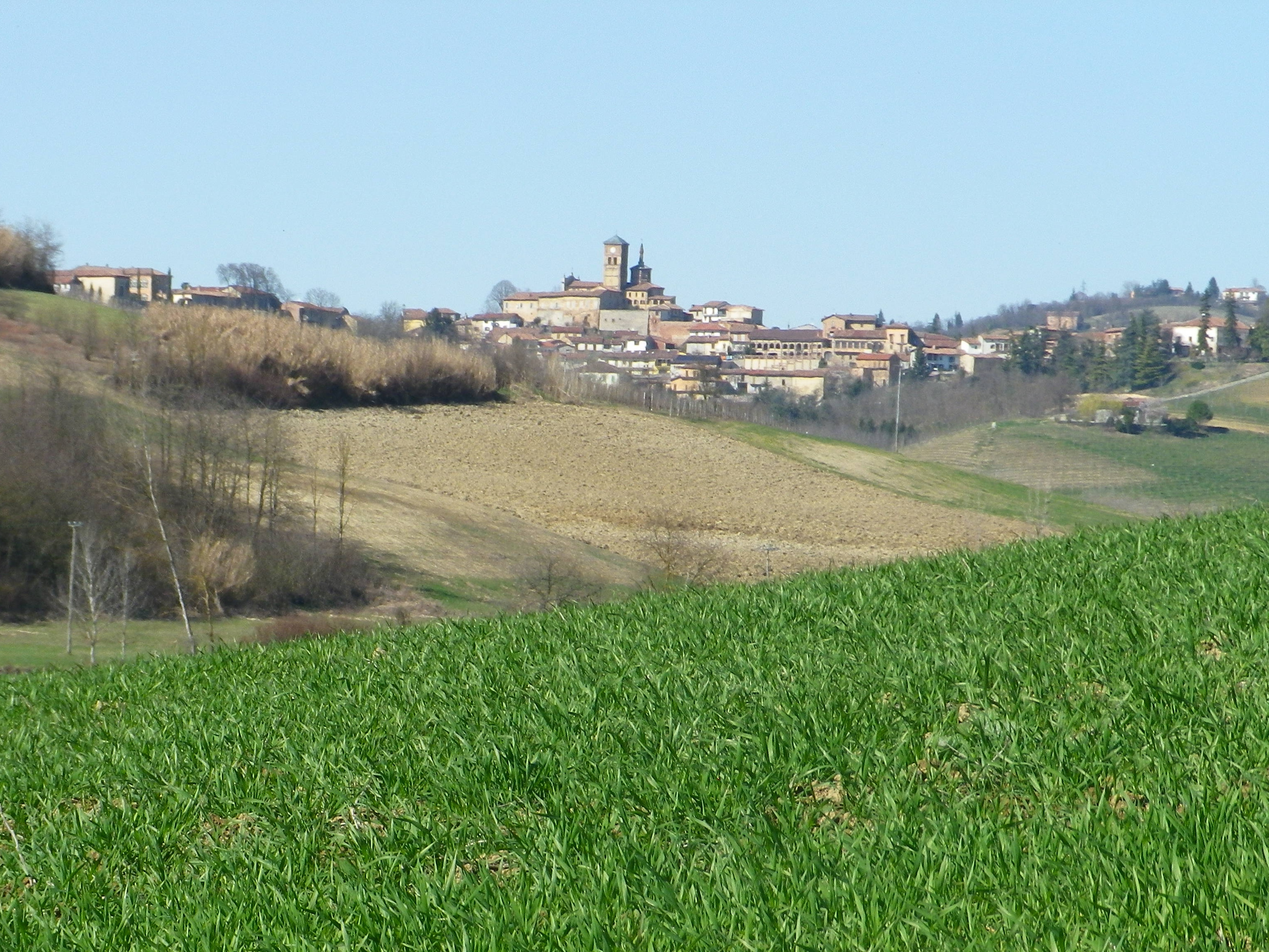
Casorzo, which the trail winds through, is a quiet village. I knew I was approaching it when I passed below the hill with the “city of the dead”. Reminiscent of old Etruscan settlements, whose tombs have been famously excavated in Tarquinia and Cerveteri south of Tuscany, Casorzo’s cemetery, replete with little house-like tombs, lies on a hilltop opposite the city of the living, i.e., the village.
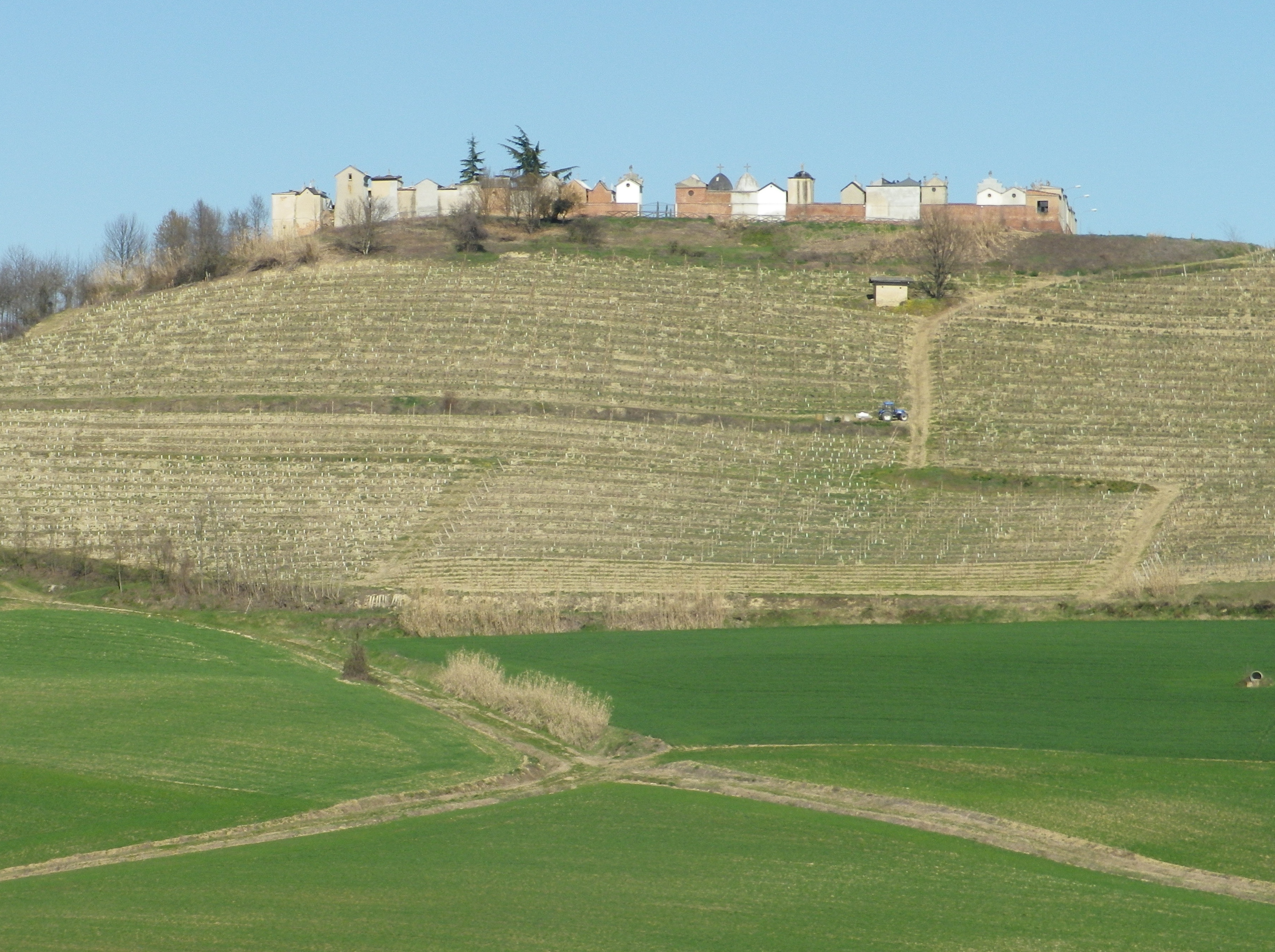
Not as dramatically sited as some others, the village of Casorzo nonetheless has its own hill-top church. The trail follows the narrow roads that wind up to it. From the map, it appears as if Casorzo was once a fortified hill-top settlement, centering around the church. Dwellings have since breached the walls to huddle beneath them on the steep slopes. At the eastern end of the hill’s crest, is a park and small church, dedicated to war dead. Vines creep up the sides of the hill here, as if to provide a memory of what this place stood for, and still stands for today: prized wine, good food, and above all, the great people who have helped to make them, and Casorzo, a community to remember.
